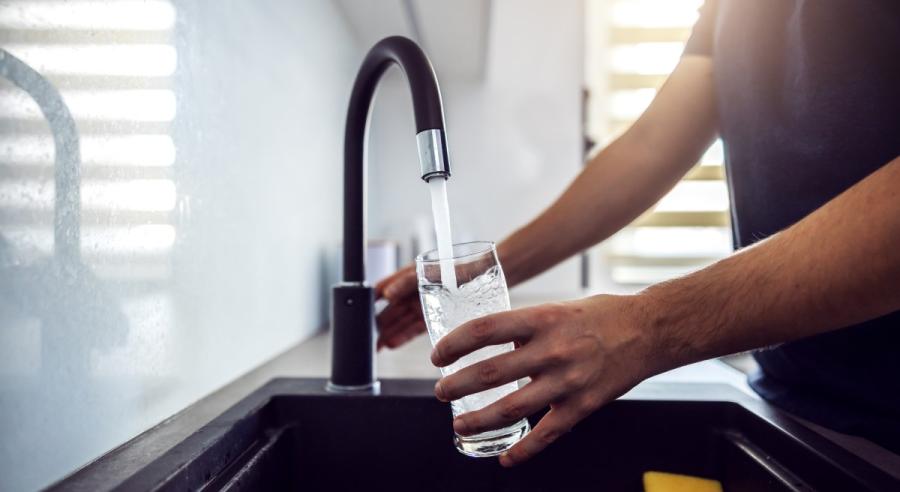High Oxygen Saturation in Lake Erie Can Mean Bubbly Water at your Tap

You may notice that the water coming from your tap temporarily appears cloudy when filling a glass. This a natural phenomenon that can occur this time of year when Lake Erie water is cold and filled with oxygen.
Lake Erie water is currently 37 °F or lower at each of our four water intakes and is more than 100% saturated with oxygen. After this water is made safe to drink at our treatment plants and then flows through the distribution system to your house, it can come out of the faucet looking a bit cloudy.
The glass, pot, pan, or carafe of water that you filled from your tap will slowly become clear from the bottom to the top. Within a few minutes, the cloudiness clears and the water looks normal.
There’s no need to be concerned. The water is safe.
What you’re witnessing is science in action. The cloudiness is thousands of tiny oxygen bubbles that were dissolved in the water and are now escaping back into the air.
A chemical property of water is how much dissolved oxygen the water can hold. The colder the water, the more oxygen can be dissolved in between the water molecules. Warmer water holds less dissolved oxygen.
When water is in Lake Erie, oxygen exchange between the air and the water is a continuously occurring invisible process. Fish and other critters that live in the lake need oxygen in the water to breathe.
In the summer, when water temperatures are warmer, the lake water can be 100% saturated based on water temperature but still have less dissolved oxygen than it does in winter when water is colder but oxygen saturation levels are lower. Water can achieve more than 100% saturation based on its temperature. This condition is referred to as supersaturation.
Even more oxygen is pushed into the water as pressure moves water through our expensive web of water mains on the way to your home. During this journey, the temperature pretty much stays the same. But when water sits in the cold water pipes in your home, the water temperature increases quickly.
The small diameter of home plumbing means more water molecules can interact with the inside surface of the pipes. The water absorbs heat from the pipes. Plumbing pipes are close to the air temperature in your home.
As the water warms, the oxygen comes out of the water and forms tiny bubbles. When the water comes out of your tap, the thousands of bubbles make the water look cloudy. Because the oxygen is lighter than water, those bubbles quickly escape to the surface of the container and dissolve into the air.
Have a question about Cleveland Water? Call our Water Quality Line at 216-664-2639.
